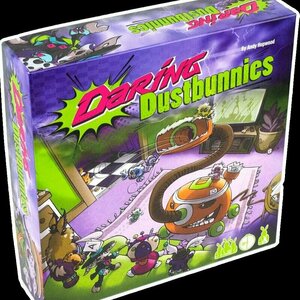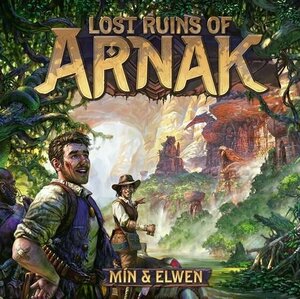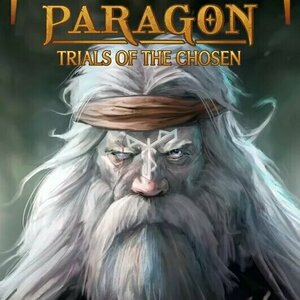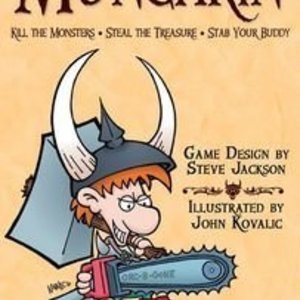
Orla Kiely Gardening Journal
Book
Provides a beautifully illustrated organizer for any gardener to record their plans and projects and...

15 19 40 48 67!
Games
App
Welcome to Bingo! A new twist to everyone's favorite classic bingo game! Are you ready to prove your...

Passport Photo Editor - Driving Licence Foto Maker
Photo & Video
App
==FREE FOR LAST DAY!Get It Now! == Support iOS10! Quick ID Photo, useful for id cards, passport,...

Turbo VPN: Better than a VPN
Productivity
App
Turbo VPN is a great tool for you to go surfing on internet freely and it's free! THE DISTINCTIVE...

Starbucks Indonesia
Food & Drink and Lifestyle
App
The official mobile application for Starbucks(R) Indonesia. Starbucks(R) ID for iPhone(R) is a fast,...
Purple Phoenix Games (2266 KP) rated Daring Dustbunnies in Tabletop Games
Mar 3, 2021
Daring Dustbunnies is a card-driven racing game for two to five players. In it players assume the roles of mystical rabbits whose fate is linked to colored fluffballs attempting to get close to the vacuum without being sucked up into it. Through timely card play the mystical hares can eke out a win or suffer the ultimate fate of being sucked into the evil Hoover (not a sponsor) of death.
DISCLAIMER: We were provided a copy of this game for the purposes of this review. This is a retail copy of the game, so what you see in these photos is exactly what would be received in your box. I will describe the overall game flow and major rule set so that our readers may get a sense of how the game plays. Like what you read? You may purchase a copy online or from your FLGS. -T
To setup place the Start tile and Vacuum tile on the table with room tiles between depending on the number of players. The gold, silver, and bronze medals, all six fluffballeeples, cat, and dog tokens will be placed on or near the modular board. Each player will be dealt two character cards, choosing one to represent themselves and the other to be flipped as a resource and Fate token organizer. Fate tokens are dealt to each player. The players will look at the Fate cards and then place them face-down on their inactive character tile. Each player receives one Wire token, three starting Static tokens, and four Move cards. The remaining Move cards and Charms cards are to be shuffled and set in decks near the board. The player who last used a vacuum will be the starting player and the game may begin!
On a turn the active player will choose one of their Move cards to play and resolve. Move cards typically show a numeric value and color of fluffball to be moved. Should the player throw a 1 of Pink, then the pink fluffballeeple is moved one space closer to the vacuum tile. If there are no other fluffballs on this space the player will perform the space’s special action. This could include playing an extra Move card, flipping the top Move card and resolving, dumping a Move card from hand, taking or giving a Move card from hand from/to another player, or moving another fluffball one space forward. If a fluffball lands on a space containing another fluffball the moving fluff instead receives a number of Static tokens equal to the number of other fluffballs on the space.
Some Move cards do not move fluffballs. Instead they may activate the Cat or Dog, which forces fluffballs either toward the vacuum or away from it, respectively (darn cats). Some cards are Talismans which force the active player to reveal their Fate card for the remainder of the round. This is important because maneuvering fluffballs in order to keep their own Fated fluff free from the vacuum is a perilous task for the player. Once their Fate token is revealed other players may then focus Move on that color fluff in order to knock out its player for the round.
Once a fluffball approaches the vacuum tile and is forced to move into it, the fluffball stops at the Tube of Destiny. Within this tube fluffballs are able to be saved with savvy cardplay, but one more Move card played matching the fluffball’s color is a death sentence to to the Bag of Beyond. Fluffballs in the Bag may not be saved by any means.
Ways a fluffball can be saved from the Tube are by Charm cards, Wire tokens, and character special abilities (possibly). Charm cards may be played before or after a Move card has been played on any turn. They are powered by Static tokens (game currency) and can offer a multitude of special powers. Wire tokens are provided at game setup and can move a fluffball backwards (away from the vacuum) for a cost of ALL the player’s Static. All characters will have special abilities printed on their character tiles, and are able to be used once per round. As each game lasts three rounds, these are very powerful.
Play continues with each player taking turns playing their cards, using Charms and special abilities, and refilling their hand of cards once all cards in hand have been played until all end of round conditions are met. The fluffball closest to the vacuum without being inside it is awarded a Gold medal, the next closest the Silver, and next closest the Bronze. At the end of three rounds players compare numbers of medals won and determine the winner!
Components. I want to start by saying I absolutely adore the theme and art style of this game. How quirky and wonderful is this theme? And it is so colorful and stinking cute! I just smile a giddy smile every time I play this because I am just having so much fun getting into the theme and using the components. That said, this game uses a lot of different components and the quality is very very good across the board. The only real minor quibble I have is the design of the Static tokens. They are supposed to be placed below the Fate token on the backside of the character tile, but that area of the tile coupled with the busy Static token design sometimes causes my eyes to go a little funny. It’s very busy-on-busy. If only one item was busy and the other a little more plain I would be completely happy with the components.
The gameplay is very unique and enjoyable. Yes, I know several games that use cardplay to move tokens along a race track. But usually in games like that the goal is to be the first across the finish line. Here the player wants their linked fluffball to be closest to the finish line without actually passing it. This little twist is something I very much appreciate and causes players to adopt different strategies than one might normally utilize.
The different special powers of the characters and Charms cards are also aspects that help raise this game’s favor. Add in the abilities of the Cat and Dog and now there are so many options for players to choose as they play the game. I know Andy Hopwood, designer, takes pride in his ability to offer games with familiar playability but with a twist. Daring Dustbunnies is no different, but is also quite a bit different than what I was expecting.
I happen to very much love this game. My 4-year-old son and I also play a watered-down version of the game without the special powers and Charms (because he can’t read yet), and he absolutely adores it. In fact, my boy enjoys just carrying the vacuum tile around the house as he would a treasured stuffie. If THAT doesn’t say “great game,” I don’t know what does.
Wait, yes I do know what does. I can say it. Daring Dustbunnies is a great game! As I am learning more about Andy Hopwood’s games I am starting to appreciate the wonderful designs and this one is one of his best, in my opinion. If you are looking for a cute and excellent game with an inventive theme and familiar gameplay, but with a twist, then you need to look into Daring Dustbunnies. Purple Phoenix Games gives this one a frantically Fated 16 / 18. Play it with your littles. Play it with your significant other(s). Play it with family and friends. I have a feeling all will enjoy it.
Purple Phoenix Games (2266 KP) rated Lost Ruins of Arnak in Tabletop Games
Feb 7, 2021
Players, or “archaeologists” as the game coins them, will have only 5 rounds to explore as much of the board as possible, which includes a hidden temple as well as the jungle proper. At the end of the 5 rounds, players will add up all victory points they have obtained from the temple, any treasure they have left, points on any cards collected, and guardians they have overcome.
“Lost Ruins of Arnak” takes place on, well… Arnak. It’s a fictional jungle that is teeming with wild animals and guardians which keep watch over various treasures all over the expansive island, from here forward referred to as the giant game board. These guardians appear when you explore a new jungle tile for the first time. They attack only if you stay in the location longer than a turn OR if you return to the location on a subsequent turn. If you eliminate a guardian, they provide a couple victory points towards your overall total at the end of the game, and a slight bonus when collecting artifacts from other locations later. Being attacked by a guardian isn’t the end of the world, but can have detrimental effects on your personal deck of cards if you fail to overcome a guardian too many times.
While in the jungle, you may place a single meeple, or “archaeologist” on your turn to discover a new area, or visit a previously discovered one. These new areas contain a guardian and some sort of gold amount or trinket (idols, artifacts, or jewels). These items can be used to push your token further through the hidden temple (see below) OR to purchase cards to improve your play deck going forward. While navigating this mysterious jungle can seem exciting at first glance, you have to be careful not to let your gold fever take over, as it may leave you with minimal points by not using some worker placement to explore the mysterious temple ruins further.
While the jungle takes up a majority of the board, there is a temple which players navigate through simultaneously on the right hand side of the giant board. While it isn’t as visually appealing as the jungle portion of the board, it serves by far the highest purpose by scoring victory points. As your token travels through this temple, more and more treasure (victory points) await. It is not suggested in the rulebook, but should be noted that failing to spend ample treasure to work your way through the temple is almost a sure-fire means of not having a chance to win the game. The mechanic of exploring the temple is unique, but can be costly in terms of managing your resources properly. In my opinion, this takes away from the luster of traversing through a hidden temple and finding as much fat loots as possible. Rather, it feels like another board game I own, where you are furiously chucking dice just trying to get through with no time to look around.
The final mechanic of the game, which, as I read reviews myself prior to purchase, thought would be more prominent, is the deck building mechanic. You are provided a few cards at the start, which is similar to most any deckbuilding game. These basic cards are your first few resources to use for traveling around the board OR for their monetary value in either gold or scrolls. Using the cards for travel allow you to explore different levels of the jungle on the game board. The lower areas of the board require less travel points, while the more lucrative spaces higher up in the jungle require more. To get more travel points, you will need better cards from the decks provided. By using your gold, also an aspect of each card, you may purchase stronger cards from the supply. So, there is a balance you must find between using your cards for travel or for purchases each turn. This can be very limiting with only having the 5 rounds in which to play.
My final thoughts: I am a total sucker for pretty much anything that says the words “deck building” on them, and this game was no exception. I went into this game thinking there was going to be this new way of using a deck building mechanic to also explore a really well crafted game board. I could not have been more wrong. The deck building aspect got so lost in the other mechanics, that I felt like I rarely had the opportunity to actually build my deck. After 3-4 plays of this game, with varying player counts from 2-4, I always ended up with a deck no bigger than about 15-20 cards. When I think deck build, I think of those powerhouses like Marvel Legendary, Ascension, or Star Realms where you are really transforming your deck into a large deck by the end. On top of that, most highly regarded deck builders require you to strategize somewhat in which cards that you buy to compliment your current deck further. Arnak completely leaves both of these elements out. Most times I found myself only able to purchase 1 card in the supply due to lack of resources that I did not have any choice in how that card would compliment my deck or not. It was merely just collecting a card to try and give my deck any sort of a distinct advantage going forward. Now, don’t get me wrong, like the game board, the artwork on the cards is stunning. By far this saves the poor mechanism of the actual cards themselves.
To me, the amount of mechanisms in the game is what gets in its own way. Its that classic, everything but the kitchen sink expression. The exploration gets in the way of the deck-building, which gets in the way of the worker placement, which gets in the way of the resource management. When I found myself wanting to build my deck, it was more crucial that I move up the temple one step. When I wanted to move up the temple, I was missing a certain idol, so I had to resort to wasting cards for gold to purchase a card for my deck that I really didn’t want. So while I think the premise is really thrilling for what this game could have been, in my opinion it just fell short. I left me wanting to explore the upper part of the jungle I never got to. I left me wanting to look at more of the artwork on the cards I never was able to purchase. In the end, I made it to the top of the temple. I couldn’t wait to enjoy my heaping pile of fat loots that awaited my studded archaeologist. However, once I turned over the treasure token, I only acquired another measly 12 victory points. This feeling left me wanting more from this game that was so hyped for its gameplay. I no longer felt like Indiana Jones, and more like I was in a bad B movie hoping for a better acting career.
Purple Phoenix Games (2266 KP) rated Paragon: Trials of the Chosen in Tabletop Games
Sep 18, 2021
Paragon: Trials of the Chosen (which I will lovingly refer to as Paragon from here on out) is a fantasy deck construction fighting card game where players will be outfitting their chosen avatars with awesome gear and abilities and sending them to battle against other players’ avatars. All players will know EXACTLY what is in their draw deck AND in what order because they have constructed it card by card and the deck will never be shuffled. Intrigued?
DISCLAIMER: We were provided a copy of this game for the purposes of this review. This is a retail copy of the game, so what you see in these photos is exactly what would be received in your box. I do not intend to cover every single rule included in the rulebook, but will describe the overall game flow and major rule set so that our readers may get a sense of how the game plays. For more in depth rules, you may purchase a copy online or from your FLGS. -T
To setup, each player chooses two avatars with whom they will play. Avatars belong to one or two different Disciplines, which allows players to construct their deck with Discipline-specific cards to be used during the game. As part of setup, each player will choose 20 cards from the gigantic deck of Equipment and Ability cards with which they will form their deck for play. Per the rules, each player will then place their chosen avatars and ordered decks in front of themselves along with a blue 1d10, the green 1d10 (all set to 1 to begin), and pile of Hearts tokens. Players draw their starting hand of five cards and the battle can begin!
The green 1d10 notates the round number, and the blue 1d10 per player represents their current Energy. To bring cards into play a player will spend the printed amount of Energy and track this on their 1d10.
Each round is played over several phases. The game is designed to play to 10 rounds, but players may play past 10 while keeping the round tracker and Energy static for all rounds after 10. The first phase is the Start Phase, and acts as a maintenance phase where players will activate any “Start Phase” effects from played cards, ready all exhausted cards, increase all the d10s, and draw the top card from their deck. Should a player be unable to draw a card during this phase due to the draw deck being empty, they immediately lose the game.
The second phase is the beefy Main Phase. This is where all the action happens. During this phase, players will take turns playing cards until both players have passed. On a turn a player will have the choice of five actions: Play a Card, Trigger an Activated Effect, Declare an Attack, Channel Energy, and Pass. To Play a Card the active player will pay the cost (in Energy) printed on the card and bring it into play exhausted. Cards brought into play this way will be attached to one of the avatars and act as an equipment or new ability, as long as the card played matches the Discipline of the avatar to which it is attached.
To Trigger an Activated Effect, the player will need to satisfy any qualifying conditions of the activation, which are printed on the card. These abilities can vary wildly and add immense strategy to play.
Once a player believes they have enough firepower attached to their avatars they may instead Declare an Attack by announcing their target and exhausting the card that is attacking. It is here that Paragon strays from the norm. Instead of damage simply being dealt to the opponent, the player may engage in a volley of playing Instant cards from hand (and paying their Energy costs) to add to the card stack. This is important, as the stack is then resolved in reverse order of play. So the last card to be played on the stack will be resolved first. This can result in attacks being nullified or shielded before they even proc. Sneaky and wily players will certainly use this phase wisely to draw out cards from their opponents’ hands. Once the stack is built, it is resolved and damage is calculated.
Players may instead elect to Channel Energy by exhausting one of their avatars to add 1 Energy to their pool. This may be repeated as long as the other avatar is available to be exhausted.
Lastly, and most easily, when players have no other actions they can or wish to complete, they may Pass in order to close out the round of phases.
When both players have Passed, the End Phase begins, and acts as another maintenance cleanup phase to ready players for the next round. This includes resolving any “End Phase” effects and increasing the round d10 by 1. The game ends once a player’s two avatars have been defeated or a player is unable to draw a card from their draw deck. The winner then boasts mightily in the face of their competitor and spews taunts and rematch challenges.
Components. This one is simple. Paragon has a giant stack of cards, a few d10s, and some wooden Heart tokens. The tokens are double-sided with a 1 printed on one side and a 3 on the other. These are obviously to track HP loss, and are fine. The 3d10 in this version are entry-level, and I will probably bling it out with some d10s that are more themed. The cards. Okay, I will certainly be sleeving this game. I want to keep my copy in excellent condition for as long as I can. In the last photo here, I splayed out the avatars that are currently included, and all the other cards stacked are the equipment and abilities to be attached to the avatars. I have no problems with the components in Paragon (I just want to get more exciting d10s to use).
There really is an insane amount of choice and customization that can be had in constructing a deck for the chosen avatars, and that is precisely why I mention in the opening that I have yet to understand all the components: how will I ever be able to perfect a combination that speaks to me and works with my style when I have about a zillion options available? I know many gamers will salivate over the amount of deliberation and possibilities contained in the box, and after several plays, I find myself weighing options in my head throughout the day. When you think about a game throughout the day and how you will attempt to play it next time, I feel that is a sign of a truly great game for you.
This is certainly not for everyone, but it definitely is for me. I truly cannot wait to try out different combinations, strategies, and deck configurations each time I play. I can also see Paragon being ripe for multiple expansions, with new avatars representing new Disciplines, or adding in expansion material that is themed for different IPs or historical eras. Well, I guess it is time to pick up a part-time job to fund my Paragon expansions.
If you are like me and enjoy games that offer near-infinite possibilities and the true feeling of never playing the same game twice, then Paragon needs to be on your shelf. The rules are easily-digestible, games take 30 minutes once you are familiar with it, and there are a ton of unique cards included in this box. Purple Phoenix Games gives Paragon an excited 5 / 6. I really think that with more plays and tweaks to my copy (maybe an expansion or two thrown in) this could eek up to a 6 and earn a Golden Feather Award from me. It is smooth, exciting, and just oozing with customization that many gamers are going to absolutely love. Go find yourself a copy and get it to the table right away!
Purple Phoenix Games (2266 KP) rated Munchkin in Tabletop Games
Jan 6, 2020
In Munchkin games, you are trying to become the first player to reach 10th Level. That’s the goal. You take on the persona of a 1st Level basic human (no Starbucks jokes please) who will be adventuring with a party of your opponents through a dungeon. You will be kicking down doors, fighting monsters, placing curses on your fellow party members, and buffing yourself with cards featuring funny art and punny references. Your party mates are also trying to achieve 10th Level and will do everything they can to block your progress, so be prepared!
DISCLAIMER: This review is not for a specific game within the Munchkin universe, but for the system as a whole. All Munchkin games will pretty much use similar, if not exactly the same, rules to play the game with minor variations and different theming. I will be using The Good, The Bad, and The Munchkin for my review as it is one of the two versions I still own of the franchise. Also, I will not be detailing every rule in the book(s), but giving a brief overview of how the game plays. -T
Setup is easy: shuffle the deck of Door cards and the deck of Treasure cards. Deal cards to the players for their opening hands and keep the included die handy.
Your turn consists of just a few phases: Open a Door, Look for Trouble, Loot the Room, and Charity. To Open a Door, flip over the top card of the Door deck. If it is a monster you must fight it or run. If not a monster, you can move on to the next phase. If it IS a monster, prepare for combat. Combat is simple in that you add up all your bonuses from your gear cards you have attached to your character and try to beat the strength of the monster. Your party mates can screw with you during combat by adding strength to the monster or adding monsters to the fight to make it a more difficult encounter. If you win, you gain a Level on the spot. Some monsters are worth even more than one Level. If you did not encounter a monster, you will add the non-monster card you drew to your hand and you may Look for Trouble by playing a monster card from your hand to initiate a combat. This fight will work the same way and you will be susceptible to pile-ons as before. You may Loot the Room if you defeated a monster on your turn by drawing Treasure cards equal to the printed reward on the bottom of the monster card you defeated. If you defeated the monster yourself, unaided, these are drawn in secret. If you were given help by your mates then you may have to split up the loot per any agreements made. These cards are usually very advantageous to you so they are usually very valuable to others as they attempt to steal away your goods. If you did not fight a monster yet this turn, you may draw another secret card from the Door deck to add to your hand. Should your hand size climb above your limit (dictated by your Race card, if any) you will slide into the Charity phase to relieve your hand of extra cards. Give all excess cards to the player of lowest Level, or split them among those that share the lowest Level. It is now the next player’s turn and you continue play until someone reaches 10th Level.
Components. It’s a bunch of cards and one die. The cards are of okay quality. Nothing to write home about. The die is nice with one of the faces having the Munchkin logo head imprinted on it. It will also have a color scheme that matches the version of Munchkin you are playing, so it’s easy to match them back up if they become integrated with each other. Overall, the components are fine, but not wonderful. That’s probably why these are pretty inexpensive to purchase.
Okay, so like I said earlier the original vanilla Munchkin was the first hobby board game I ever purchased. My friends and family had no idea hobby games existed, so there was actually a pretty steep learning curve for us. Once we figured it out, however, we began to play it a ton and really love it! The cards are cute, the game play is pretty easy if you have played hobby games before, and the puns kept us rolling for a good while. There was a time when I owned every version of Munchkin in circulation and we never even played half of them. Seeing this I got rid of them through BGG Auctions. I have The Good, The Bad, and The Munchkin and Munchkin Zombies right now and I feel that will be plenty for me from here on out – unless they make a Doctor Who or Firefly set or something /*checks warehouse23 to find out if these are available/.
Do I still love Munchkin? No, not really. I LIKE it, but I don’t really want to play it all the time any more. Why? Well, as my gamer experience increases and I level up, my game tastes also level up. I see why people enjoy and even love this game system. I myself loved it for a time. But there are better games out there that accomplish the same feelings without being as sophomoric and have better choices to be made. Will I still play these games? Heck yeah! If someone asks to play a Munchkin game I am all in. I have different tastes and preferences now, but I’m no snob. Just come prepared, because I won’t go easy on you.
We at Purple Phoenix Games give this family of titles a backstabby 16 / 24.




